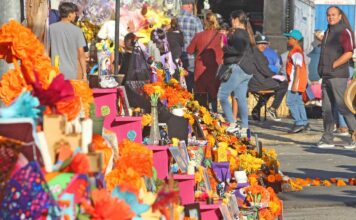Homelessness is on the rise in southern Santa Clara County,
according to a recent study conducted by county officials.
Homelessness is on the rise in southern Santa Clara County, according to a recent study conducted by county officials.
The results of the county’s 2009 homeless census and survey identified about 1,063 homeless people in Morgan Hill, Gilroy, and San Martin. That’s a 28 percent jump from two years ago, when the last such study counted 834 homeless citizens in the region.
Santa Clara County Office of Affordable Housing Director Margie Matthews said the homeless census, conducted in January, shows Santa Clara County is consistent with similar metropolitan areas across the country when it comes to homelessness. The county’s total homeless population of 7,086 is less than the nationwide norm of about 1 percent of the total population.
“I don’t think there’s anything too unusual about Santa Clara County,” Matthews said. “Our countings get more accurate, and this is an undercount. The homeless usually like to stay out of sight.”
The county’s number of chronically homeless, those who have experienced lengthy or frequent periods of homelessness and suffer from a disability, went up about 35 percent to 2,270 since 2007.
In South County, the chronically homeless went up by 170 percent, from 84 to 227.
Furthermore, the study found that more than 12,300 people in Santa Clara County experienced homelessness for at least one night in the past year.
Specifically, while the homeless population in Gilroy dropped, that of Morgan Hill and unincorporated areas increased.
Supervisor Don Gage, who is co-chair of the county’s “Destination: Home” program, said the rising number of chronically homeless is “troubling” because it is more difficult to get them into stable housing. While homeless throughout the country was noticeably declining in 2007, it has risen again due to economic conditions, Gage said.
“When the recession hit, it went back up again because people lost their houses, and lost their jobs,” Gage said.
About a third of the 938 homeless people surveyed in the county study cited the recent loss of a job as the primary factor contributing to their lack of a home. About half have been homeless for more than a year.
Matthews did not know exactly why homelessness increased in South County and dropped in other areas. She noted that census methods have improved since the last count, which might have been less accurate.
The local homeless census and survey is required as a condition for the county’s receipt of federal grants through McKinney-Vento Homeless Assistance Act of 2001, which was intended to eliminate homelessness by 2011. The approach to that goal adopted by the federal and county governments, Matthews explained, is a “housing first” policy to find permanent homes for the homeless.
She said numerous cost-benefit studies have shown it costs less to put the homeless into apartments or houses, than to continue to pay for services they need because of their homelessness – such as hospital emergency rooms, jails and temporary shelters.
“The federal government doesn’t want to keep spending all this money just to maintain homelessness,” Matthews said. “The idea is to get them into permanent housing.”
St. Joseph’s Family Center in Gilroy received about $300,000 in federal Housing and Urban Development funds to be used to assist the local homeless population last year, according to the nonprofit organization’s executive director David Cox.
Locally, the funds are used to pay monthly rents and security deposits for homeless people who qualify for permanent housing. Having a home gives them greater ability to seek other services and employment, Cox explained.
“We’re no longer trying to locate people and provide sporadic assistance, (we’re providing) comprehensive services once they get into housing,” Cox said.
But St. Joseph’s is only able to make a “small dent” in the overall homeless population, as they are currently housing 10 individuals, and working on another program to house up to 10 families.
Cox added that since 2007 St. Joseph’s has “certainly” noticed a greater need for all of its programs among the communities it serves.
Homelessness in Santa Clara County, by the numbers
-Homeless people in SCC, 2007: 7,202
-Homeless people in SCC, 2009: 7,086
-Total county population, 2009: About 1.7 million
-Unsheltered homeless, 2009: 70 percent
-Sheltered homeless (in emergency or temporary shelters), 2009: 30 percent
-Homeless people in South County, 2007: 834
-Homeless people in South County, 2009: 1,063
-South County chronically homeless, 2007: 84
-South County chronically homeless, 2009: 227
-Homeless by ethnicity, South County, 2009: 61 percent Hispanic/Latino, 26 percent white, 6 percent black, 1 percent Asian
-Homeless for a year or more, South County, 2009: 53 percent
-South County homeless citing one or more disabling conditions, 2009: 65 percent
-South County homeless claiming at least one mental health issue, 2009: 45 percent














